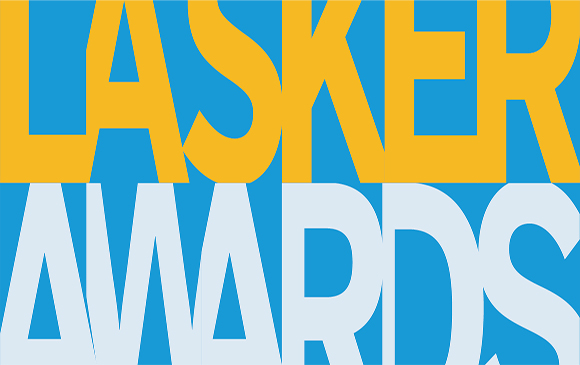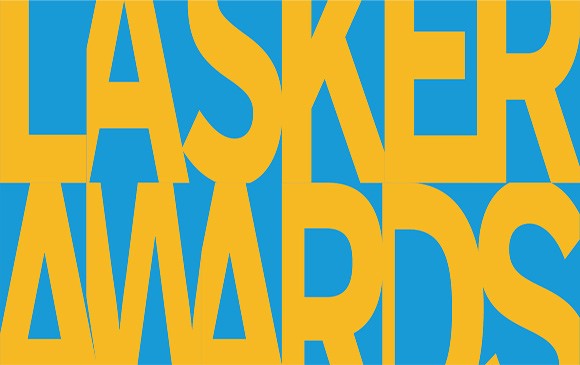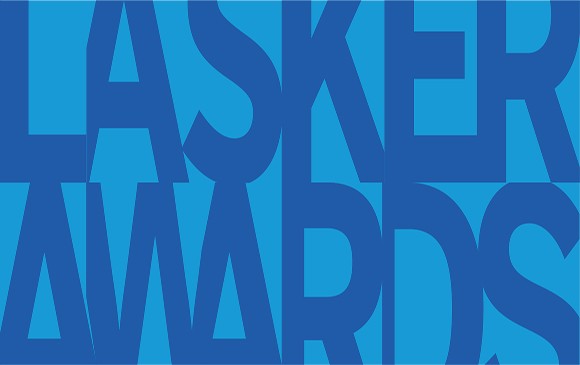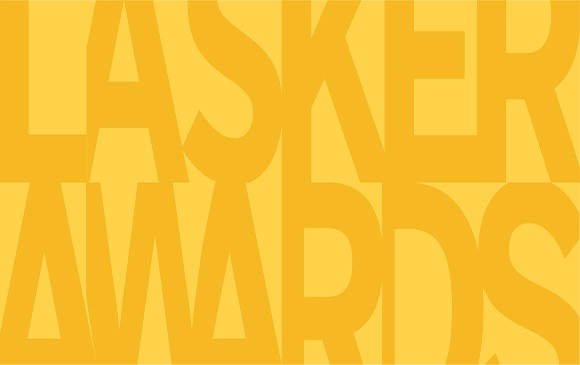One day in 1969, microbiologist Porter Anderson and pediatrician David Smith sat down in a lab at the Children’s Hospital Medical Center in Boston and rolled up their sleeves. After taking blood samples, they injected each other with an experimental vaccine they had developed to protect against the bacterium Haemophilus influenzae type b (Hib). Despite its name, the microbe causes meningitis and throat infections, not influenza. At the time, it was killing about 1000 children every year in the United States and leaving another 6000 with problems such as hearing loss, seizures, and brain damage.
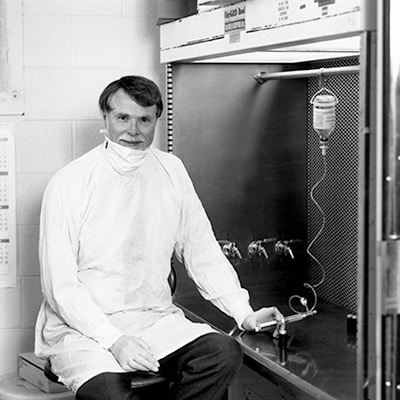
Anderson at the University of Rochester (1990)
Image courtesy of the University of Rochester
Other researchers had tested potential Hib vaccines but abandoned them because they triggered harsh side effects. Anderson and Smith were convinced that they knew where the previous efforts had gone wrong and that their vaccine would not harm them. Still, says Anderson, “We were not very far from emergency management if needed.” But they didn’t require the crash cart. Even better, the vaccine appeared to work — it stimulated their immune systems to churn out antibodies that kill Hib. Anderson and Smith shared the 1996 Lasker Award with two other scientists for devising the first vaccines against Hib. They are among the fifteen scientists and one organization that have received Lasker Awards for developing or distributing vaccines. The work of these winners has benefited billions of people, sparing much of the world’s population from a rogue’s gallery of illnesses, including measles, hepatitis B, pneumonia, cervical cancer, and meningitis.
A Chance Connection
Anderson says his involvement in Hib research “was just something that happened.” The bacterium cloaks itself in a gooey covering that has the consistency of thick corn syrup and is composed of capsular polysaccharide (CP), a long chain of sugar molecules. In the late 1960s, researchers erroneously thought that the microbe synthesized CP from RNA, which has a sugar core. Anderson wasn’t working on Hib at the time, but he knew how to purify RNA, prompting Smith to ask him to join the vaccine project.
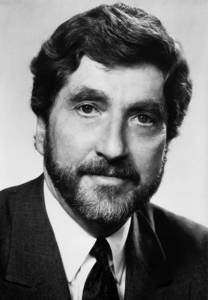
Smith (1958)
Image courtesy University of Rochester
The microbe’s capsule provokes the immune system to attack, an effect Smith and Anderson wanted to harness for a Hib vaccine. Their Lasker Award co-winners, Rachel Schneerson and John Robbins, both then at the National Institutes of Health, were independently trying to do the same thing.
Smith and Anderson suspected that the previous experimental vaccines against Hib caused such severe side effects because they were contaminated with a bacterial molecule known as endotoxin, which sparks inflammation. Anderson worked out a chemical procedure to purify CP and eliminate most of the endotoxin. The vaccine that Anderson and Smith injected into each other contained this cleansed CP. After the pair suffered no ill effects from the shots, they tried their preparation on several colleagues, including a 72-year-old Nobel laureate in a neighboring lab.
Anderson says he and Smith decided to experiment on themselves and other scientists first to accelerate the research.
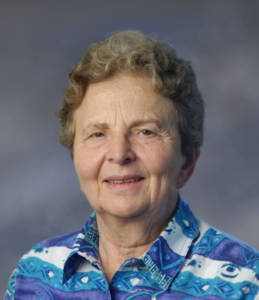
Schneerson (2003)
Image courtesy of National Institutes of Health
Schneerson and Robbins had also been scrutinizing CP, and by the mid-1970s both groups’ vaccine mixtures were ready for clinical trials. For children older than about 18 months to 2 years, the shots ignited a powerful immune response against the bacterium. But “the vaccines didn’t work in younger children,” who are the most vulnerable to Hib, says Anderson. Their immature immune systems didn’t react as vigorously to the stimulation provided by the injections.
To overcome this problem, both groups resurrected a method from the 1930s. Researchers had discovered that they could boost the immune system’s response to a sugary molecule by linking, or conjugating, it to a protein. The combination produces a stronger effect, Anderson explains, because the protein enlists T cells, important immune fighters that otherwise would stay on the sidelines. “It was pretty clear that conjugation was the right way to do this,” says Anderson. Each group began developing its own conjugate vaccine, using different chemical reactions to affix immune-stimulating proteins to CP.
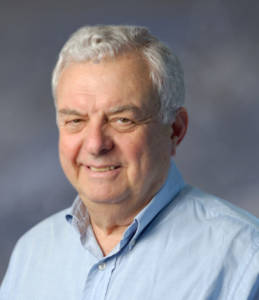
Robbins (2003)
Image courtesy of the National Institutes of Health
Schneerson and Robbins, who were ahead in the chemistry of conjugation, provided important tips that aided Anderson and his chemist colleague Ronald Eby. Meanwhile, Smith and Anderson had moved to the University of Rochester and were able to shift quickly into human studies of vaccine prototypes. Their pediatrics colleague Michael Pichichero conducted crucial and successful early testing.
Smith’s “rather bold spirit in taking risks” was crucial for the development of Hib vaccines, Anderson says. Smith took one of those risks in the early 1980s when pharmaceutical companies balked at producing the vaccines. He founded his own company, Praxis Biologics, to manufacture them — the Lasker jury honored him partly for his efforts to make the vaccines available.
The next few years saw a rush of developments. In 1985, the US Food and Drug Administration approved the first Hib vaccine, a Praxis-made non-conjugate variety, for children who were at least 24 months old. The first conjugate vaccine, which combined aspects of the two groups’ approaches, got the OK in 1987 for 18-month-olds. By 1990, two more conjugate vaccines — one of which Anderson and colleagues devised — had won approval. Both could be given to infants at two months of age. Thanks to these vaccines and their successors, severe Hib cases — which can result in problems such as pneumonia, arthritis, and meningitis — have plummeted by 99% in the United States over the last 35 years.
Conjugate vaccines remain stalwarts in the fight against Hib. Infants typically receive a series of Hib vaccines starting when they are two months old. Other widely used conjugate vaccines target the potentially deadly bacteria Neisseria meningitidis and Streptococcus pneumoniae.
Joining the Battle Against Meningitis
In 1966, Emil Gotschlich’s scientific career was prospering. He was working in the prestigious Laboratory of Bacteriology and Immunology at Rockefeller University in New York and had just been promoted to assistant professor. Then he received his draft notice — at age 31. “The local draft board decided I no longer needed training [in science], so they drafted me,” says Gotschlich. Far from crimping his career, Gotschlich’s two-year stint in the US Army resulted in the first vaccine against meningococcal diseases, infections caused by N. meningitidis that can be fatal. He shared the Lasker Award for the achievement in 1978.
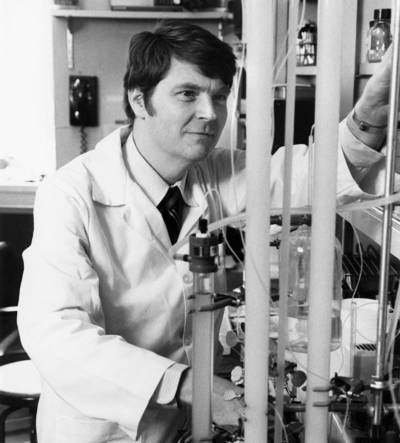
Gotschlich in the lab, Rockefeller University (1981)
Image courtesy Rockefeller University
The Army sent the newly commissioned Captain Gotschlich into combat against bacterial enemies, posting him at the Walter Reed Army Institute of Research in Washington, D.C., where he joined a lab that was investigating N. meningitidis. At Rockefeller University, his research on S. pneumoniae’s outer coat, which is composed of polysaccharides, required him to bone up on protein and polysaccharide chemistry. “By happenstance, I was quite well prepared” to study N. meningitidis, which also sports a polysaccharide capsule.
The bacterium comes in 12 varieties, or serotypes, that differ in the architecture of their polysaccharide covering. In the 1960s, the A serotype mainly caused outbreaks in less-developed countries, especially in Africa, whereas the C serotype was the main menace in the United States. It was sickening thousands of recruits at military camps, hence the Army’s interest.
In crowded conditions, such as in these camps, many people who are exposed to N. meningitidis become carriers as the microbe settles down in the back of their throats. They suffer few or no symptoms but can transmit the bacterium to others. However, in some victims the microbe invades the blood and attacks the membranes covering the brain and spinal cord, leading to symptoms such as headache and a stiff neck. Antibiotics can cure many infected people, but some suffer permanent problems such as paralysis, hearing loss, and diminished mental abilities.
In the 1930s and 1940s, researchers had isolated polysaccharides from the A and C serotypes from bacterial cultures and then tried to use the molecules to produce a vaccine. But injecting polysaccharides into volunteers hadn’t sparked the expected immune response. Gotschlich and his colleagues discovered why. The isolation procedure had broken these large molecules into pieces that were probably too small for the immune system to detect. The researchers came up with a better method that protected the polysaccharides. “The trick was to isolate them very quickly from cultures so as to maintain their molecular weight,” Gotschlich says.
Gotschlich served as the first guinea pig for the next stage of the research, injecting himself with full-size polysaccharide molecules to determine if they were safe. “I was pretty confident there would be no problem,” he says. He was right. But he had performed the experiment without permission from the commander of Walter Reed. When it was clear that he wasn’t going to suffer any side effects, “I had to confess that I had done this,” he says. Instead of exploding, the commander arranged for Gotschlich to use the Institute’s production facility to generate more of the vaccine, allowing tests on five other people. Like Gotschlich, they generated antibodies that destroyed N. meningitidis in lab experiments.
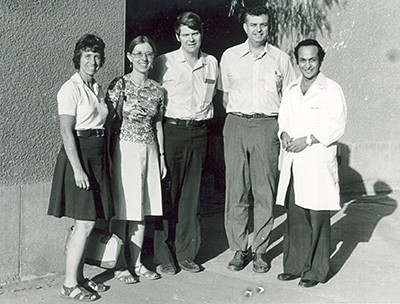
A site visit in the Infectious Diseases Laboratory in Cairo, Egypt brought together Gotschlich (third from left) and Robbins (second from right) (1983).
Image courtesy of Gotschlich
Whether the vaccine could stem an outbreak of the disease was another story. To be useful, a vaccine must not only protect people who haven’t been exposed to the bug but also prevent individuals from becoming carriers.
Gotschlich and colleagues gauged their vaccine’s capabilities in 1968 by injecting more than 600 soldiers at Fort Dix in New Jersey with polysaccharides from the A or C serotype. At the time, the C serotype was sweeping the facility. The researchers found that the shots cut the risk of becoming a carrier with that serotype by up to 88%. The camp did not have any cases of the A serotype, however, so the scientists couldn’t figure out if the vaccine was effective against this variant.
The US military began giving the C serotype vaccine to all recruits in 1971. Three years later, the FDA approved it and two other meningococcal vaccines for the general public. After leaving the Army, Gotschlich joined forces with the World Health Organization and the Institut Mérieux in France to develop and test a vaccine against the A serotype. Since then, more than a billion people around the world have been immunized against different serotypes of N. meningitidis. Gotschlich notes that the shots are mandatory in most armies and for pilgrims undertaking the Hajj, the Islamic pilgrimage to Mecca. In the United States, the Centers for Disease Control and Prevention recommends conjugate vaccines that protect against multiple serotypes, including A and C, for all 11- and 12-year-olds.
The Vaccine Virtuoso
When Maurice Hilleman’s five-year-old daughter began to show symptoms of mumps early one morning in 1963, he saw an opportunity. Hilleman, who was chief of the virus and cell biology unit at the pharmaceutical behemoth Merck and Company in New Jersey, hopped into his car, sped to his lab, and grabbed some swabs. Back at home, Hilleman swabbed his daughter’s throat to collect samples of the mumps viruses that were making her ill. Known as the Jeryl Lynn strain in her honor, those viruses were the raw material for the first mumps vaccine, which doctors began injecting into children four years later. The shot is just one of the more than 40 vaccines devised by Hilleman, who won the Lasker Award in 1983.
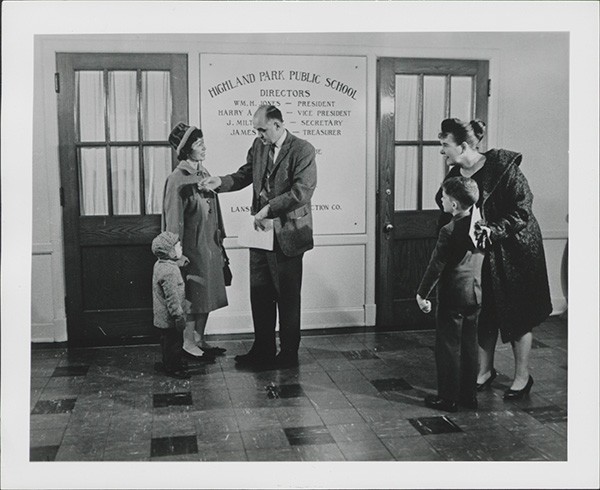
Hilleman meeting with children and parents during testing of the measles vaccine
Image courtesy of Merck
If the criterion is number of lives saved, “he was the most important scientist of the twentieth century,”
says Hilleman’s biographer Paul Offit, a pediatric infectious disease specialist at the Children’s Hospital of Philadelphia. A vaccine developer himself, Offit was part of the team that created a new vaccine against rotaviruses that was approved in 2006. Several qualities made Hilleman so prolific, Offit says. He was fearless and relentless, working seven days a week and firing any employees who couldn’t keep up. In addition, Offit says, “He was brilliant. He knew what was known” in his field. Hilleman’s “remarkable sense of judgment” was also crucial for his success, says Offit. Hilleman began demonstrating his gifts shortly after finishing his PhD in 1944. While working at the pharmaceutical company now known as Bristol Myers Squibb, he produced his first vaccine, which protected US soldiers against Japanese encephalitis, a viral disease that was widespread in Asia and the Pacific Islands. After moving to the predecessor of Walter Reed in 1948, he created a vaccine against two strains of viruses that cause colds and other respiratory infections. Hilleman kept a hit list of diseases he wanted to target, and over the next several decades he was able to cross off many of them, including measles, rubella, hepatitis A, hepatitis B, meningitis, and chicken pox.
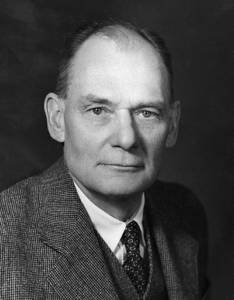
Enders (1954)
One of his most significant achievements was improving the measles vaccine. Researchers led by John Enders of Harvard Medical School, who won the Lasker Award and the Nobel Prize in 1954 for his work on the polio virus, created the first measles vaccine, which was approved in the United States in 1963. The vaccine contained a weakened version of the measles virus, but it could still pack a punch. Patients typically received the vaccine in one arm and a shot of antibodies in the other to block side effects like fever and rashes.
Hilleman realized the virus needed to be weakened further, so he grew it for multiple generations in chicken embryo cells. As the virus adapted to reproduce in bird cells, it became less harmful for human cells. The strain produced by this procedure, which Hilleman called Moraten, an abbreviation of “more attenuated Enders,” proved to be gentler on children and was incorporated into measles vaccines in 1968. Hilleman later combined it with the Jeryl Lynn strain and a strain of the rubella-causing virus he had tamed to produce a single-shot vaccine against measles, mumps, and rubella — the famous MMR vaccine that more than a billion children have received since its introduction in 1971.
Hilleman’s legacy includes 9 of the 14 vaccines that are recommended for children today. Although the MMR vaccine now contains a different strain of rubella virus, it still has the Jeryl Lynn mumps strain and Moraten measles strain. People today live about 30 years longer than they did a century ago, and Hilleman’s vaccines are one reason why, Offit says.
COVID-19 vaccines in record time
Less than five months after Chinese officials reported the first cases of a new respiratory disease in 2019, scientists started safety tests of two vaccines against COVID-19 that relied on a radically new approach for stimulating the immune system. The process was so fast — a new vaccine typically takes 10 years or more to develop — partly because of research by the winners of the 2021 Lasker Award, Katalin Karikó of the German biotech firm BioNTech and Drew Weissman of the University of Pennsylvania.

Karikó and Weissman (Lasker Award video 2021)
The vaccines’ key ingredient is messenger RNA (mRNA), a molecule that tells cells what proteins to manufacture in their protein foundries. To elicit immunity, the vaccines deliver mRNA that spurs human cells to fashion copies of spike, a protein on the surface of the virus that causes COVID-19. Researchers had long hoped to slip mRNA into cells and thereby create vaccines or treat diseases. Karikó and Weissman overcame several of the obstacles that were standing in the way. The two, who began collaborating more than 20 years ago when Karikó was at the University of Pennsylvania, complemented each other, says Weissman. “I am an immunologist that works on vaccines; she is a molecular biologist.” Several of their advances resulted from “the combination of our skills,” he says. One problem, they discovered, was that mRNA inserted into immune cells can promote inflammation. Their solution was to tweak one of the nucleoside building blocks of RNA, uridine. A small change to the molecule cut production of inflammation-promoting molecules, they revealed in 2005.
Another roadblock was how to deliver mRNA to cells. Weissman’s lab showed that tiny lipid-cloaked nanoparticles were ideal for the job. In 2017, the researchers tucked the modified mRNA into nanoparticles and generated a vaccine that protects animals against the Zika virus, a forerunner of the COVID-19 vaccines.
The Lasker winners relied on their creativity, persistence, and willingness to take risks to produce their breakthrough vaccines. But vaccines remain elusive for many illnesses, including HIV infections, dengue fever, leishmaniasis, and schistosomiasis. Today’s researchers might need to draw on these same qualities to come up with vaccines to
fight these killers.
By Mitchell Leslie
